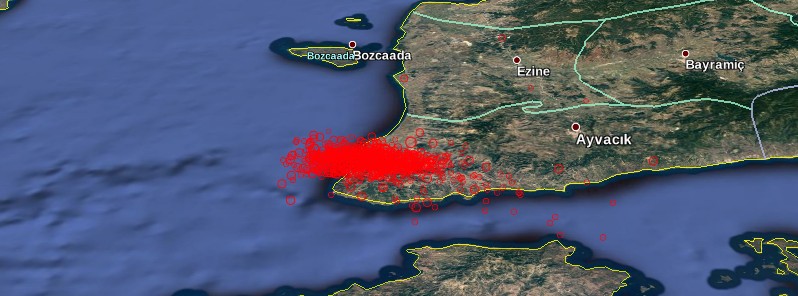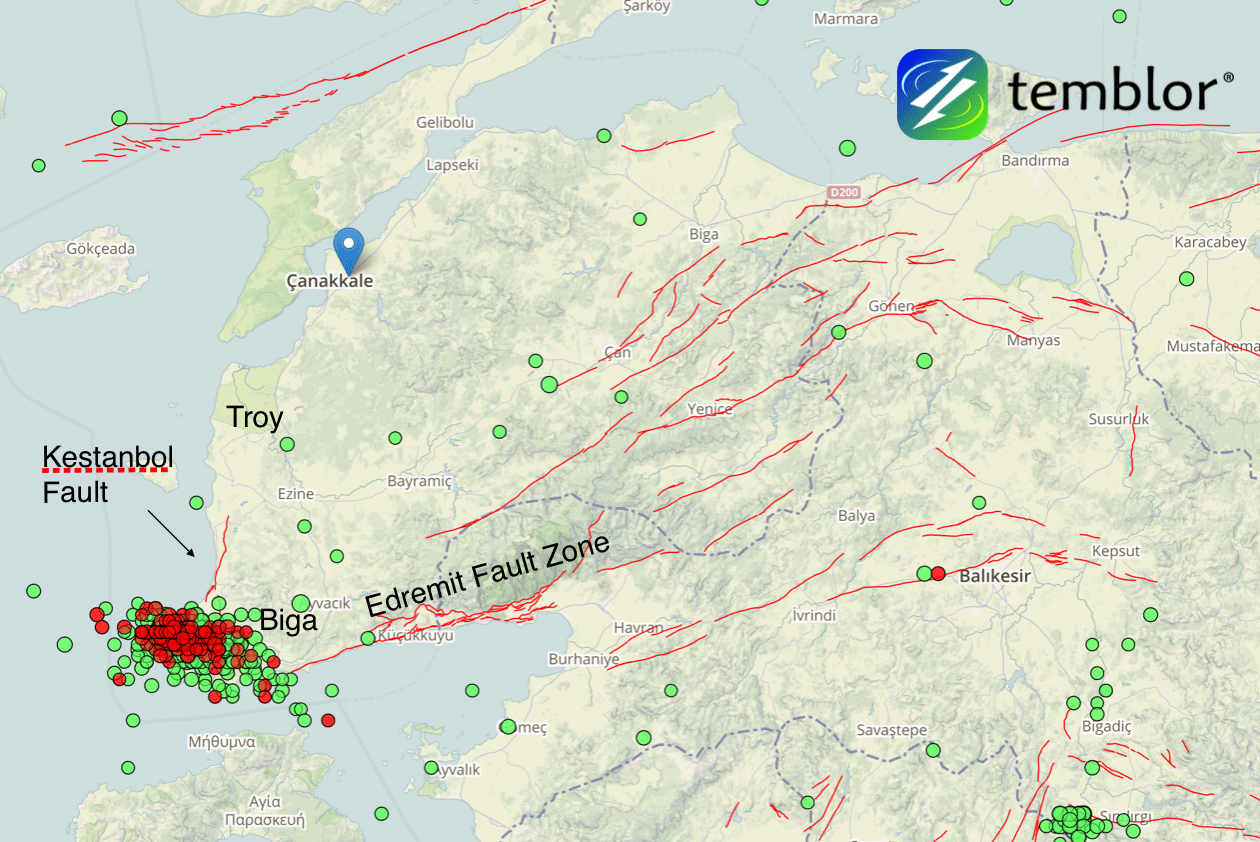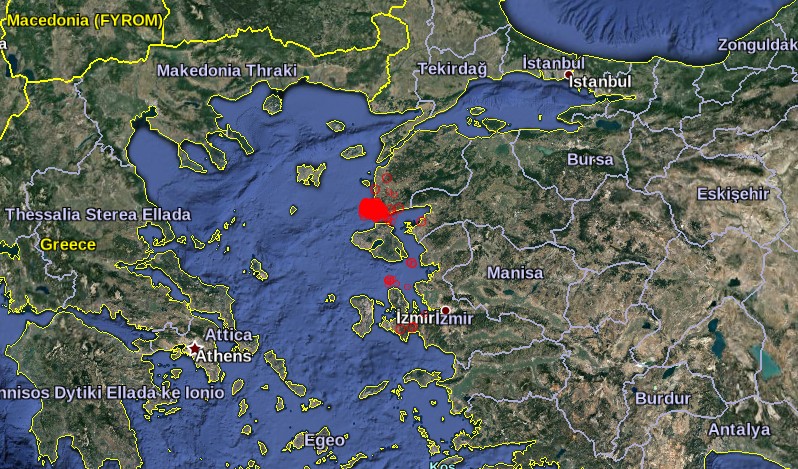Damaging earthquake swarm shaking Western Turkey

A series of shallow and damaging earthquakes are shaking the tip of the Biga Peninsula in Western Turkey this month. The sequence includes four damaging M5+ earthquakes in which over 350 buildings sustained extensive damage. The quakes are occurring at the intersection of the Kestanbol Fault and the Edremit Fault Zone.
The strongest so far was M5.4 on February 6, 2017. This quake hit at a depth of 6 km (3.7 miles) at 13:08 UTC and was preceded by M5.2 at 08:36 UTC. The same area was hit by M5.3 at 08:08 UTC on February 7 and M5.0 at 13:55 UTC today. All quakes occurred at depths between 6 and 10 km (6.2 miles).
Since January 1, the region saw a total of 1 096 earthquakes, according to data provided by the EMSC. 879 of them occurred between February 1 and 12, and 841 between 00:19 UTC on February 6 and 13:55 UTC on February 12.
According to Volkan Sevilgen, Akın Kürçer and Hasan Elmacı (Temblor, MTA), the quakes are occurring at the intersection of the Kestanbol Fault and the Edremit Fault Zone.
As a result of the three damaging M5+ earthquakes, over 350 buildings sustained extensive damage. The Turkish Government has swiftly built a small village from container houses for those who needed shelter and asked residents not to enter any building before official building assessment.
"We calculated that the recent seismic swarm stressed the western portions of the Edremit Fault Zone by about 0.1 bar," the team wrote in their analysis.

Credit: Temblor.Net
"If we start seeing larger numbers of small earthquakes on the Edremit Fault Zone, it would suggest the fault was triggered by the seismic swarm. The last large earthquake on the Edremit fault was a magnitude 6.7 earthquake in 1944. Therefore, a similar quake in the future would not be surprising. Thus, we think the seismicity around the Edremit fault should be closely monitored."
Seismic swarms generally occur in geothermal areas where faults are lubricated by hot water, making them easier to slip, they explained.
"This area is one of the most active geothermal regions in Turkey, with some water temperatures reaching 174 ºC (345 ºF). Water boils at 100 ºC (212 ºF) at sea level but the high pressure environment underground prevents evaporation. Most seismic swarms end without triggering a large earthquake."

Earthquake swarm near the coast of Western Turkey – February 1 – 12, 2017. Data provided by EMSC, map by Google
Reference:
- "A Trojan Horse? Seismic swarm in Turkey gently stresses a major fault zone" article published at Temblor.Net written by Volkan Sevilgen (Temblor), Akın Kürçer (MTA), Hasan Elmacı (MTA) published February 10, 2017 (accessed February 12, 2017)
Featured image: Earthquake swarm hits near the coast of Western Turkey – February 2017. Credit: EMSC, Google

Причиной множество вулканов, землетрясений последние годы на Земле является бурения скважин, с целю поиска парогидротермов в “качестве альтернативной энергии” (“геотермальная энергетика”). При этом нарушается естественная система защиты подземных источников тепла, что приводит возбуждению очага тепла ! В результате в зависимости свойств грунта местности приводит (заканчивается) вулканам или землетрясениям. Следует учесть, что на сегодняшний день ни одно природное явление не имеет правильное объяснение ! Спасти МИР КАК И ОТ ЧЕГО http://az.strategiya.az/index.php?do=xeber&id=25870